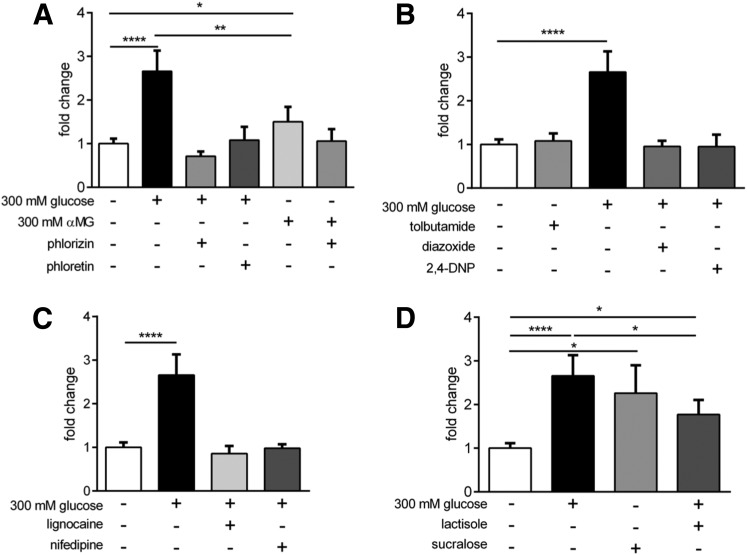Figure 3.
Mechanisms controlling glucose-induced GLP secretion in human ileal L cells. A: SGLT1 and GLUT2 blockade by phlorizin and phloretin, respectively, abolished the stimulatory effect of high glucose levels on GLP-1 secretion. The nonmetabolizable SGLT1 substrate α-MG caused significant GLP-1 secretion but was less potent than equimolar glucose, and its stimulatory effect was reversed by phlorizin. B: The KATP channel opener and ATP synthesis inhibitor diazoxide and 2,4-DNP, respectively, completely abolished the effect of high glucose levels on GLP-1 secretion, but the KATP channel closer tolbutamide did not cause significant GLP-1 secretion from basal levels. C: Blockade of voltage-gated Na+ and Ca2+ channels by lignocaine and nifedipine, respectively, significantly inhibited the stimulatory effect of high glucose. D: STR activation by the noncaloric artificial sweetener sucralose caused significant GLP-1 secretion from basal levels, but the STR blocker lactisole did not attenuate the stimulatory effect of high glucose levels. Bar graph data are the mean ± SEM. *P < 0.05, **P < 0.01, ****P < 0.0001 compared with respective control groups (n = 7–9).

